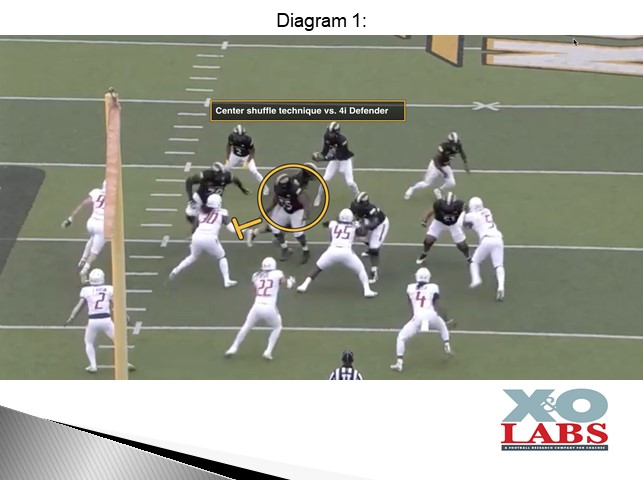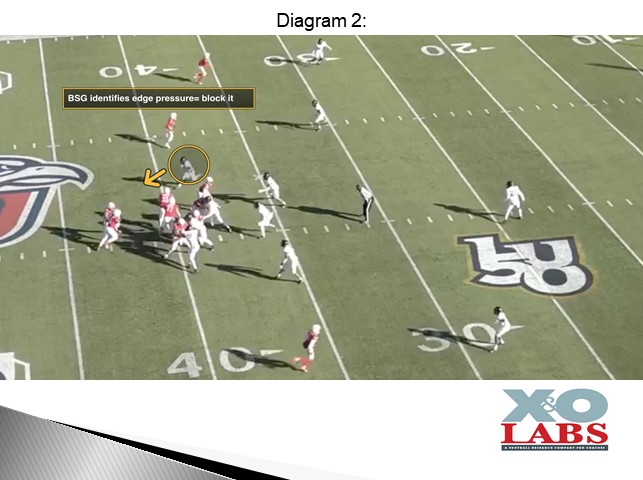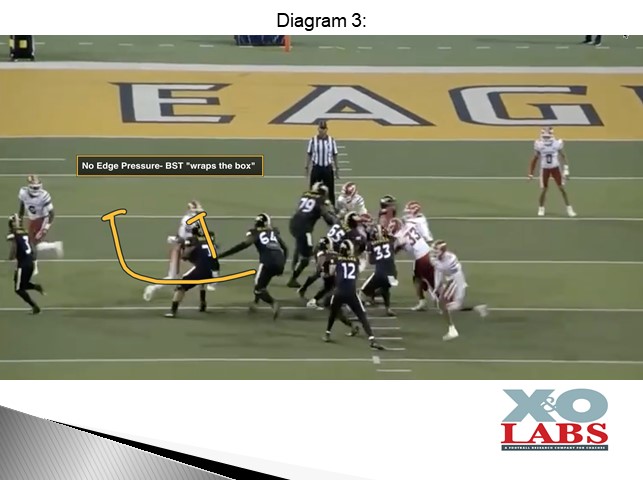By Mike Kuchar with Sam Gregg
Offensive Line Coach
University of Southern Mississippi
Twitter: @CoachSamGregg
It’s important to note that while keeping the tight end on the field side can equate numbers to block field pressure, there are mechanisms in the Southern Miss offense to check tight zone away from over-rotation by the defense. But in any “call it, play it” scenarios, the tight end is asked to identify the extra defender play side and account for him. While this report is centered on the role of the tight end, we wanted to give some insight into some subtle differences on how Southern Miss teaches the concept positionally.

Center Backside Hand Technique:
The Center back block can be an issue against any form of pressure, so Coach Gregg and his staff spend a good deal of time teaching him to use a backside hand technique to help the backside Guard on his pull. It’s something Southern Miss used a great deal against Florida Atlantic’s Odd defense it a bowl game a season ago. “We try to catch him in the B gap and depending on how good that Nose is we will use that backside hand technique,” said Coach Gregg.
And against 4i techniques that are so prevalent in Mint fronts, Coach Gregg teaches a shuffle technique for the Center on the back block. This allows him to keep his shoulders square and stop any penetration.

Backside Pullers:
As the first puller, the backside Guard has to be able to identify any Nickel pressure. Essentially, he has two rules: if he identifies Nickel fire he blocks it.

If there is no edge pressure, the second puller (backside Tackle) is taught to do what Coach Gregg calls “wrap the box,” and slingshot around to handle defenders inside out.

“We let the play side Guard read through it,” said Coach Gregg. “If he knows he has a front side double team his eyes go right to the Nickel. If the Nickel is not firing, we wrap the box and I gain a blocker. That’s easy practice and you can drill that. You can jump in 12 Personnel and do the same thing and have another tight end pulling.”
If you run the G/T counter it’s important to keep the correct depth between pullers because of potential pressure or spill techniques at the line of scrimmage. Because of this, Coach Gregg talks about one puller being on the line (Guard) and one puller being off the line (Tackle) so that they can react to what they are seeing. “The Guard needs to be in the line to force the kick or log,” said Coach Gregg. “When the Guard pulls, we don’t log the defensive end. The defensive end logs himself. That backside Tackle has to have space.”









